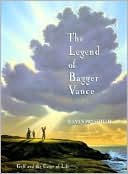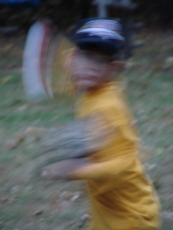 Last week, the Red Sox invited me to visit the team’s offices on Yawkey Way. “Why don’t you come by around noon on Wednesday and sit in on a bunch of meetings?” And so I did. Between noon and 4pm, I attended four meetings:
Last week, the Red Sox invited me to visit the team’s offices on Yawkey Way. “Why don’t you come by around noon on Wednesday and sit in on a bunch of meetings?” And so I did. Between noon and 4pm, I attended four meetings:
1. A bi-weekly meeting of the team’s vice presidents and directors (I counted 28 of them), led by team president, Larry Lucchino. Each VP/director gave a brief update on his/her area of responsibility and fielded a question or two from Lucchino. Even yours truly was asked to say a few words. (“I don’t mean to put you on the spot, Rob,” said Larry, “but what’s the state of the Nation?”)
2. A meeting led by senior vice president sales/marketing, Sam Kennedy, to discuss the status of the Red Sox Fellows Program’s recruiting efforts.
3. A meeting led by Sam Kennedy and director of client services, Troup Parkinson, with executives from a company that currently spends about a half-million dollars per year in advertising with the Red Sox. The purpose of the meeting was to brainstorm ways to reconfigure the deal going forward.
4. A meeting led by manager of community marketing, Mardi Fuller, on “Marketing to Women.”
Rather than give you the blow by blow on these meetings, I thought I’d share with you the most striking take-aways of my afternoon at Fenway:
1. Larry Lucchino has the entire organization under his thumb, and he seems to enjoy being president and getting involved in the details of every aspect of the organization. He ran the VP/directors meeting like an emcee, sprinkling in anecdotes from time to time, quizzing VPs on facts about their area, and handing out praise generously. He is clearly well-liked and highly respected by his charges.
2. Out of the 28 team VP/directors who spoke at that first m eeting, only two mentioned actual baseball players: Brian O’Halloran, director of baseball operations (he attended in Theo Epstein’s stead), who gave a brief update on minor transactions that had occurred in the last two weeks, and Dick Bresciani, the team’s historian and archivist, who gave a spirited presentation about “this week in Red Sox history.” As a fan, it was striking to see that 95% of the meeting focused on issues that would bore most fans to tears.
eeting, only two mentioned actual baseball players: Brian O’Halloran, director of baseball operations (he attended in Theo Epstein’s stead), who gave a brief update on minor transactions that had occurred in the last two weeks, and Dick Bresciani, the team’s historian and archivist, who gave a spirited presentation about “this week in Red Sox history.” As a fan, it was striking to see that 95% of the meeting focused on issues that would bore most fans to tears.
3. At lunch, following the VP/directors meeting, I had a chance to talk with Ron Bumgarner, who runs the ticketing operation. “The Yankees and every other pro sports organization laughs at us for the lengths we go to to try to make tickets accessible to regular fans,” he said. And after 20 minutes of hearing about the thought process behind their ticket operations, I believed him.
He confessed that sometimes the lengths to which the Sox go to make things fair have a negative effect on their efforts to make the experience easy. For example, when tickets are available online, some people wait ten minutes to purchase tickets, while others who have waited hours and hours and were “in line” first get nothing. He explained that if the Sox did not pluck folks out of the “virtual waiting room” randomly, the agencies/resellers would chew up all the tickets – because they have the manpower and, more importantly, the programmer power to dominate the “front of the line” and proactively “mole” their computers to butt in the queue. He said that they could sell out Fenway’s 81 games in one day if they wanted to, and that would make their job easy, but they don’t do that because it would not be fair to the “average fans.”
4. I assumed that the Red Sox Fellows Program would cater to the grandchildren of owners and nieces of senior vice presidents, but the meeting on the Fellows Program made it clear to me that the Sox are truly looking for a robust, diverse pool of applicants. Just as the baseball operations people are looking for talented players, the business operations people are looking for talented, capable “fellows” to inject the organization with energy and to develop executives of the future. (For more information on the Red Sox Fellows Program, click here. Applications for the 2008 season are due January 4, 2008.)
5. It was fascinating to me that 80% of the 90 minute-long meeting with the corporate sponsor was spent “developing the relationship” — talking about the 2007 season, catching up on how business is going, talking about mutual friends and acquaintances. Only 20% of the time was spent exploring the future of the company’s business relationship with the Sox, and no actual financial terms of a deal were discussed.
6. The Red Sox have a gigantic “home field advantage” when meeting with potential corporate sponsors at Fenway Park. Sam and Troup probably didn’t notice the awe twinkling in the eyes of the three guest executives (two of whom had flown in from D.C., and one from New York) as they walked down the corridor to the conference room, gazing at the posters and photos of Red Sox greats on the walls. What was perhaps ‘just another meeting’ for Sam and Troup was clearly one of the most exciting business meetings of the year for their guests. When we sat down for the meeting, a snow-covered Fenway Park loomed in the background through the window wall. Even if you’re not a baseball fan, you can’t help sprouting goosebumps in that room.
 7. One question that was raised at the “Marketing to Women” meeting was, “With every game sold out and TV ratings high, and with a broader female fan base than any other major league baseball team, why should the Red Sox care about appealing to women more than they already do?” The two big answers were: Because an organization that appeals to women as well as men will thrive even when the team isn’t winning, and because women represent half of the potential customer base/audience.
7. One question that was raised at the “Marketing to Women” meeting was, “With every game sold out and TV ratings high, and with a broader female fan base than any other major league baseball team, why should the Red Sox care about appealing to women more than they already do?” The two big answers were: Because an organization that appeals to women as well as men will thrive even when the team isn’t winning, and because women represent half of the potential customer base/audience.
Other interesting points raised included: a) Women (and men) spend more time directly experiencing the Red Sox through NESN (and their team of Jerry Remy, Don Orsillo, and Tina Cervasio) than through personal trips to Fenway Park. Therefore, any marketing efforts targeting women need to examine the effectiveness of this channel. b) Men (whom are the default targets of existing Red Sox marketing efforts) have young daughters they want to bring to Fenway Park; they have girlfriends and wives who sometimes accompany them when they attend a game or watch on TV; and certainly “baseball” can compete with all these women for “quality time” in the life of a male fan. Therefore, the more broadly the team appeals to women, the more broadly it will appeal to its default audience of men, as well.
8. In the end, the Red Sox offices are still offices where people go to work every day (most are crammed into small cubicles), and the nature of their work is not unlike the work done in other organizations: finance, marketing, customer relations, sales, advertising, public relations, etc. While all Red Sox employees have highly coveted jobs, they don’t walk around exuding excitement and gratitude for their good luck; in fact, I’d say they all looked pretty worn out after a long, strenuous 2007. (I assume the office atmosphere is slightly different in May, during a Yankees homestand, the day after an Ortiz walk-off home run…)
I want to thank the Red Sox organization for welcoming me into their offices for a few hours. Their hospitality rates a ten out of ten, and I appreciate their high hopes for the new roles of President and Vice President of Red Sox Nation.

















